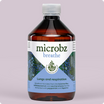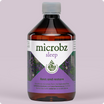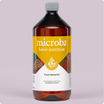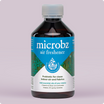Yellow Dock
Rumex crispus

Family: Polygonaceae
Which probiotic is it in?:
Habit and cultivation: Originally from Europe, North Africa, and Western Asia, it has been naturalised in Australia and New Zealand. It grows freely in roadside ditches and on wasteland, preferring damp places but has the ability to survive in drier environments or cultivated ground. Deep rich damp soils and full sun produce better roots. Drought and frost resistant. The roots are dug up in autumn, chopped and dried.
Actions (known for): Alterative (general, bowel, hepatobiliary), cholagogue, laxative and astringent.
History of Yellow Dock
Parts used from the Yellow Dock
Root
Constituents (bio available chemicals):
Anthraquinones 3-4% including emodin, chrysaphenol and nepodin. Tannins, volatile oil and resins.
Nutritional constituents:
Vitamins: A and C. Minerals: iron, manganese and nickel.
Indications:
Constipation, jaundice, psoriasis, chronic skin conditions, arthritis and anaemia. Externally: gingivitis (mouthwash), laryngitis (gargle), slow healing ulcers and wounds.
Dosage:
Liquid extract (1:2): 15-30ml per week. Decoction of dried root: 2-4g 3 x daily.
British Herbal Pharmacopoeia
skin conditions, especially psoriasis with constipation.
Cautions for therapeutic doses
Avoid during pregnancy and lactation.




































